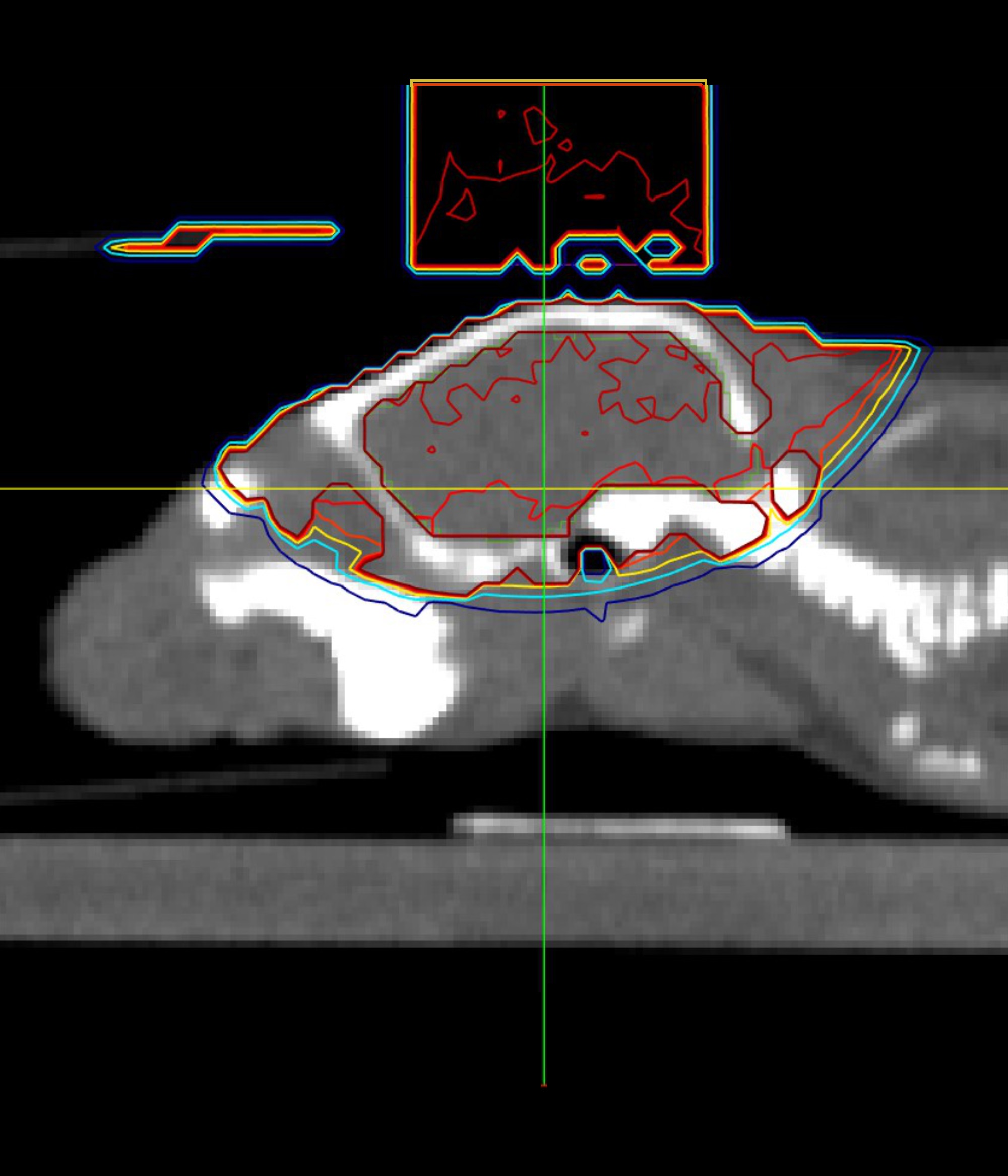Preclinical modeling
Our "Preclinical Modelling" research group focuses on establishing novel combinatorial therapy approaches against pediatric high-grade gliomas using state-of-the-art tumor spheroid cultures and in vivo models. We utilize somatic gene delivery to induce targeted genetic changes directly in the murine brain. This allows us to rapidly test different combinations of genetic alterations identified in related patient samples. The resulting tumors represent novel, immunocompetent models, which we use to understand tumor development and to assess new therapeutic approaches.
Our main focus lies in the establishment of experimental treatments and innovative combination therapies. This includes high-throughput in vitro screens for novel radiosensitizers, upfront combinations of radiation and targeted inhibitors, analysis of the tumor micro environment and immunotherapies as well as experimental gene therapies using nanocapsules. Our aim is to reveal synergistic interactions between the different treatment modalities and to ultimately establish efficacious, multimodal therapy approaches for pediatric high-grade gliomas.

Spotlight - AG Zuckermann
Combining c-MET inhibition with radiation is effective in MET-fusion driven high-grade glioma
By investigating the cellular basis for capmatinib’s synergistic efficacy with RT, we found that the compound increases the amount and persistence of DNA double strand breaks induced by radiation.
Experimental therapy
Besides analyzing the efficacy of new and promising inhibitors in vivo, we are investigating an experimental therapy approach. Within this project, we are combining selected adeno-associated virus (AAV) variants with oncogene-specific CRISPR-nucleases to treat orthotopic in vivo models. We could identify novel tumor-specific AAV variants as well as oncogene-specific CRISPR-nucleases and are currently combining most promising candidates to evaluate their antitumor efficacy.
Overcoming resistance
In clinical trials, single agent modalities against various targets have displayed potent initial response, yet acquired resistance and tumor relapse is often inevitable. This holds true for many preclinical studies, also when using promising, modern inhibitors. Thus, we are currently aiming at generating resistant tumors in vivo in order to analyze the underlying resistance mechanisms. These efforts will not only provide valuable insight into tumor evolution under treatment but also inform future combinatorial therapy approaches.
Combination therapies
One recently emerged focus of the group is the combination of targeted treatment with radiotherapy (RT). We identified that combining MET inhibition with radiation is highly effective for the treatment of MET-driven pediatric high-grade glioma (pHGG) in multiple preclinical models, greatly outperforming single therapies. We are currently expanding this concept to further pHGG entities.
2024
M. Zuckermann, et al. 'Capmatinib is an effective treatment for MET-fusion driven pediatric high-grade glioma and synergizes with radiotherapy' Mol Cancer, 23: 123.
2022
Sigaud, R. *, L. Rösch, C. Gatzweiler*, J. Benzel*, L. von Soosten*, H. Peterziel, F. Selt, S. Najafi, S. Ayhan, X. F. Gerloff, N. Hofmann, I. Büdenbender, L. Schmitt, K. I. Foerster, J. Burhenne, W. E. Haefeli, A. Korshunov, F. Sahm, C. M. van Tilburg, D. T. W. Jones, S. M. Pfister, D. Knoerzer, B. L. Kreider, M. Sauter*, K. W. Pajtler*, M. Zuckermann*, I. Oehme*, O. Witt*, and T. Milde*. 'The First-in-Class Erk Inhibitor Ulixertinib Shows Promising Activity in Mapk-Driven Pediatric Low-Grade Glioma Models. ' Neuro Oncol, 10: 1093.
2020
Ernst, K., K. Okonechnikov, J. Bageritz, J. P. Mallm, S.M. Pfister, M. Zuckermann*, and D. T. W. Jones*. 'Establishment of a simplified preparation method for single-nucleus RNA-sequencing and its application to long-term frozen tumor tissues', bioRxiv 2020.10.23.351809.
2018
Zuckermann, M., M. Hlevnjak, H. Yazdanparast, M. Zapatka, D. T. W. Jones, P. Lichter, and J. Gronych.
2015
Zuckermann, M., V. Hovestadt, C. B. Knobbe-Thomsen, M. Zapatka, P. A. Northcott, K. Schramm, J. Belic, D. T. Jones, B. Tschida, B. Moriarity, D. Largaespada, M. F. Roussel, A. Korshunov, G. Reifenberger, S. M. Pfister, P. Lichter, D. Kawauchi, and J. Gronych. 'Somatic CRISPR/Cas9-mediated tumour suppressor disruption enables versatile brain tumour modelling', Nature Communications, 6: 7391.
- Michelle Arnet (PhD student)
- Chun Ho Chan (PhD student)
- Alessia Cais (PhD student)
- Diego Yair Grinman (Post Doc)
- Nina Hofmann (technician)
- Eric Konrath (animal caretaker)
- Jana Nolle (technician)
- Lena Parzer (PhD student)
- Franziska Schelb (technician)
- Laura von Soosten (PhD student, co-supervised with David Jones)

Postal address:
Hopp Children's Cancer Center Heidelberg
Im Neuenheimer Feld 580
D-69120 Heidelberg
Germany

